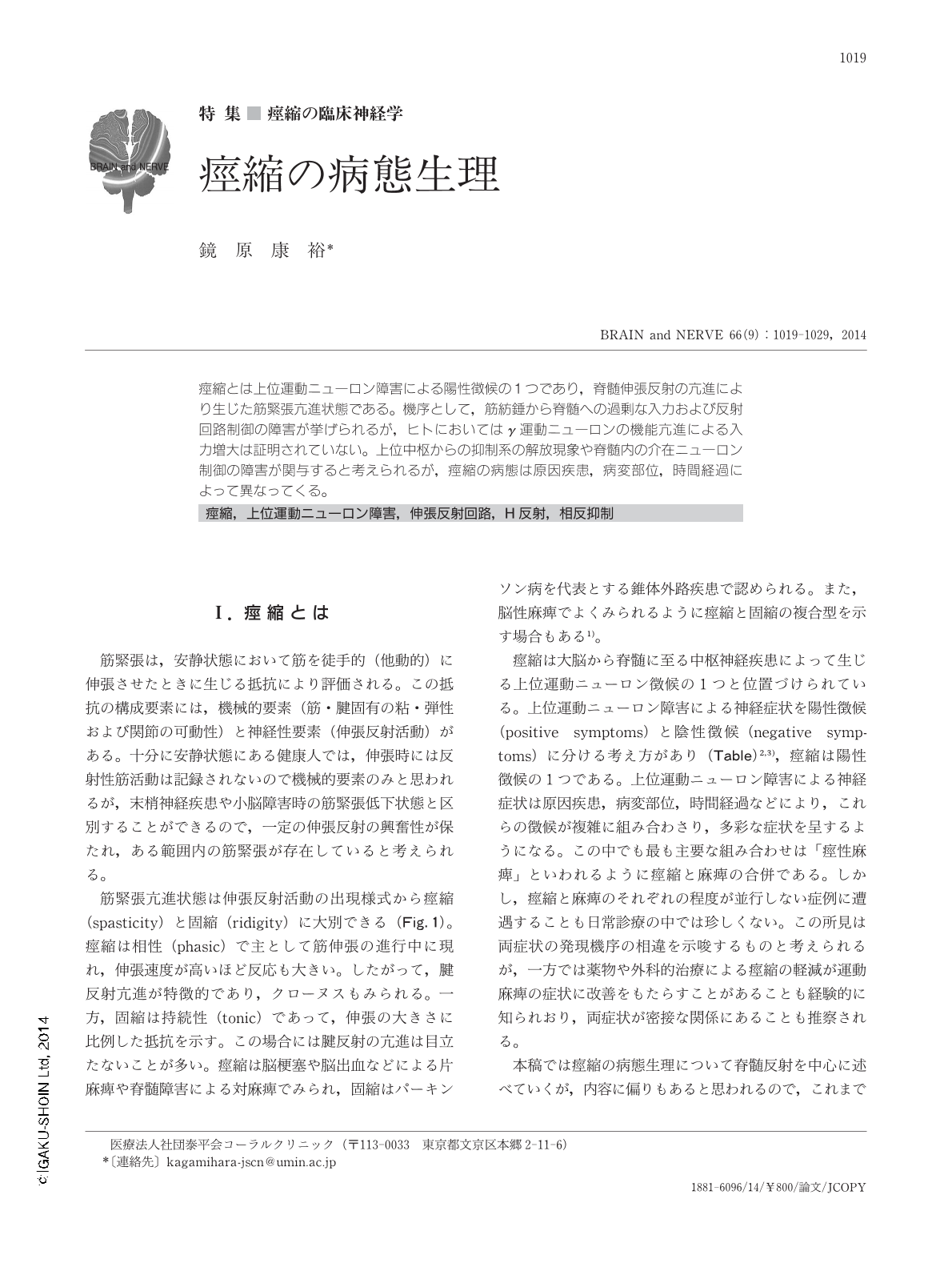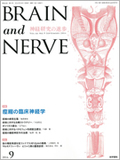Japanese
English
- 有料閲覧
- Abstract 文献概要
- 1ページ目 Look Inside
- 参考文献 Reference
痙縮とは上位運動ニューロン障害による陽性徴候の1つであり,脊髄伸張反射の亢進により生じた筋緊張亢進状態である。機序として,筋紡錘から脊髄への過剰な入力および反射回路制御の障害が挙げられるが,ヒトにおいてはγ運動ニューロンの機能亢進による入力増大は証明されていない。上位中枢からの抑制系の解放現象や脊髄内の介在ニューロン制御の障害が関与すると考えられるが,痙縮の病態は原因疾患,病変部位,時間経過によって異なってくる。
Abstract
Spasticity is characterized by abnormal increase in phasic and velocity-dependent response to muscle stretching, such as exaggerated tendon jerks and clonus. Clasp-knife phenomenon is often observed in the affected muscles. Spasticity is caused by either an excess input to the spinal cord or a disordered descending control of the spinal motor system including the myotatic reflex arc. The increased input due to hyperactivity of γ motor neurons has not been demonstrated in human subjects. The hyperactivity of excitatory interneurons and decreased function of the inhibitory system interneurons in the spinal cord as well as the uncoupling of the inhibitory system from the central system are believed to be involved in spasticity; however, the underlying pathology may differ based on the lesion site and the time elapsed since loss of reciprocal inhibition.

Copyright © 2014, Igaku-Shoin Ltd. All rights reserved.


